Akutai Matsuri and Takinagashi-no-shiki
The "Akutai Matsuri," a strange festival in Japan
Japanese strange festivals: Akutai Matsuri (The festival of saying something bad thing)

The last festival of the year since the Edo period
Video of Akutai Matsuri, a Japanese strange festival
You can watch a video of Akutai Matsuri held on New Year's Eve, 2018, at Oiwasan Bishamonten.
- <Video of the greeting by the organizer of Akutai Matsuri>
You can watch a video of the organizer greeting the participants and explaining the origin of the festival and the bad words that should not be said at the festival.
- <Video of the Lantern Procession of Akutai Matsuri>
You can watch a video of the lantern procession of Akutai Matsuri, which is lit by lanterns and goes up the dark mountain road in a procession while swearing.
- <Video of the precincts of Oiwasan Bishamonten during Akutai Matsuri>
You can see a video of the lantern procession of Akutai Matsuri, going up the stairs of the Oiwa Mountain Bishamonten, bell ringing in the bell tower, and visiting the main temple.
The "Akutai Matsuri" to get rid of bad luck.
wooden tag to ward off evil spirits
Swear words that should not be said at Akutai Matsuri
Origin of the "Akutai Matsuri" of Oiwsan Bishamonten
The "baku" and the escape from evil
Lantern procession at Akutai Matsuri
"Loud Swearing Contest" at Akutai Matsuri
Slide animation of "Loud Swearing Contest" at Akutai Matsuri
Video of Loud Swearing Contest at Akutai Matsuri
You can watch a video of "Loud Swearing Contest" at Akutai Matsuri held on New Year's Eve, 2018, at Oiwasan Bishamonten.
- <Video of the venue for Loud Swearing Contest at Akutai Matsuri>
Prior to Akutai Matsuri, a loud swearing contest will be held on the night of New Year's Eve. You can see a video of the venue before that loud swearing contest begins.
- <Video of the greeting by the organizer of the Loud Swearing Contest>
The video includes a greeting from the organizers of loud swearing contest, an explanation of the origin of Akutai Matsuri, rules of the loud swearing contest, how the loudest voices are measured, and prizes.
- <Video of participants in Loud Swearing Contest at Akutai Matsuri>
You can watch a video of the participants standing on a stand, shouting out their frustrations for the past year, and having their loudness measured by a noise-measuring device.
- <Video of the Award Ceremony of Loud Swearing Contest at Akutai Matsuri>
You can watch a video of the award ceremony for the loud swearing contest at Akutai Matsuri



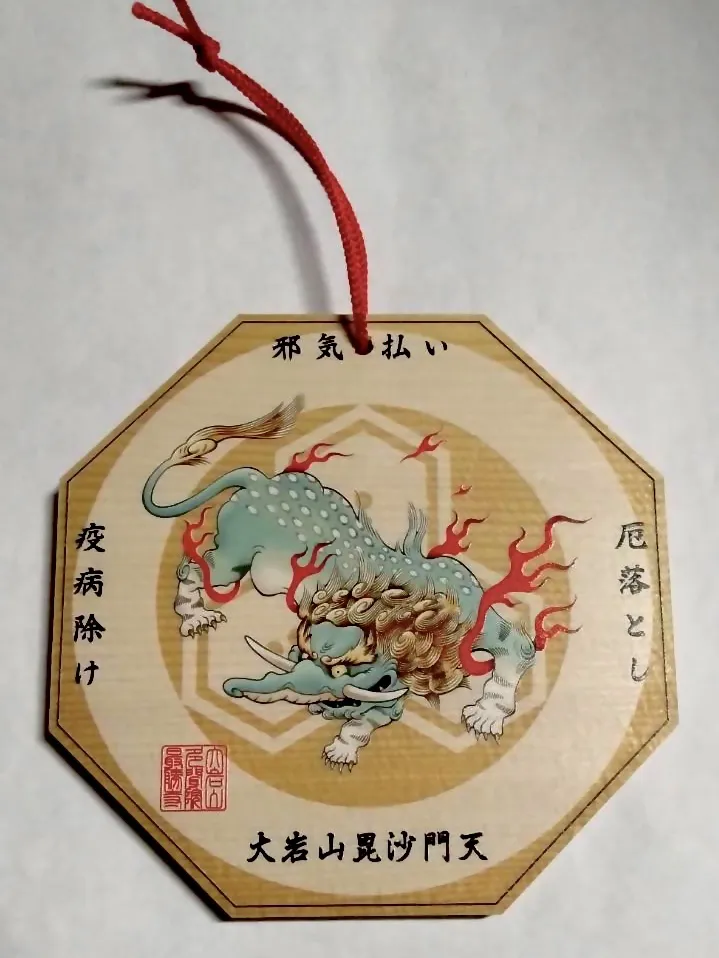
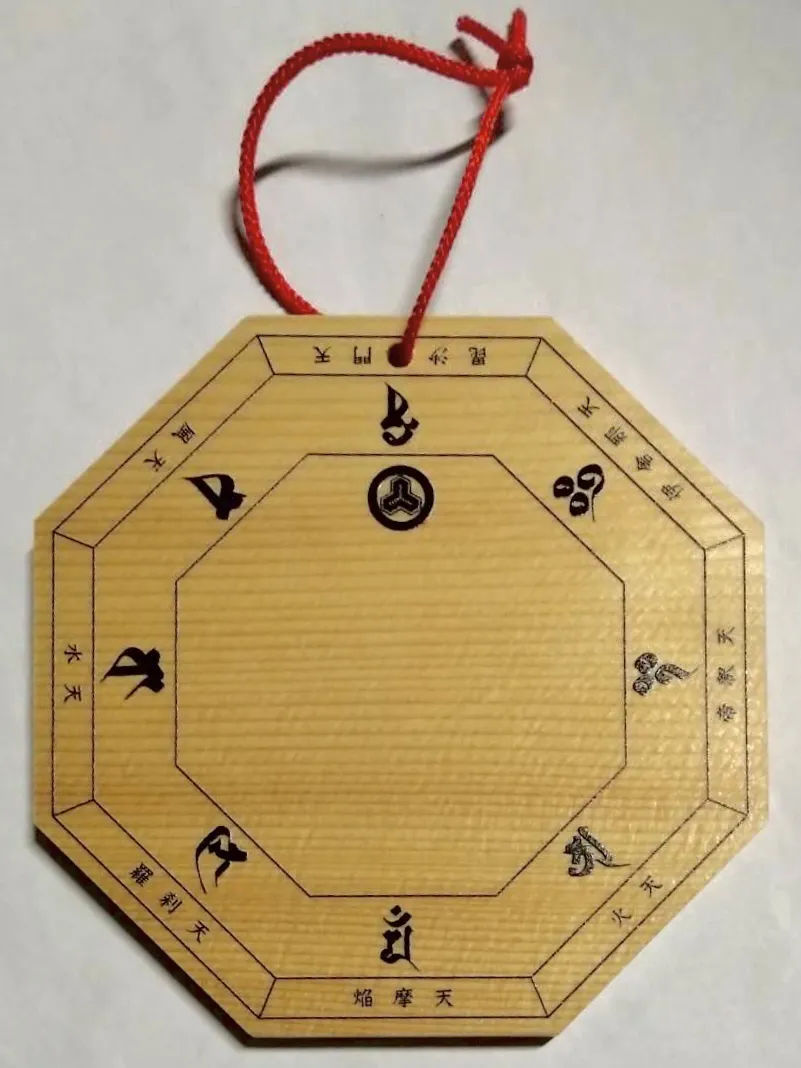
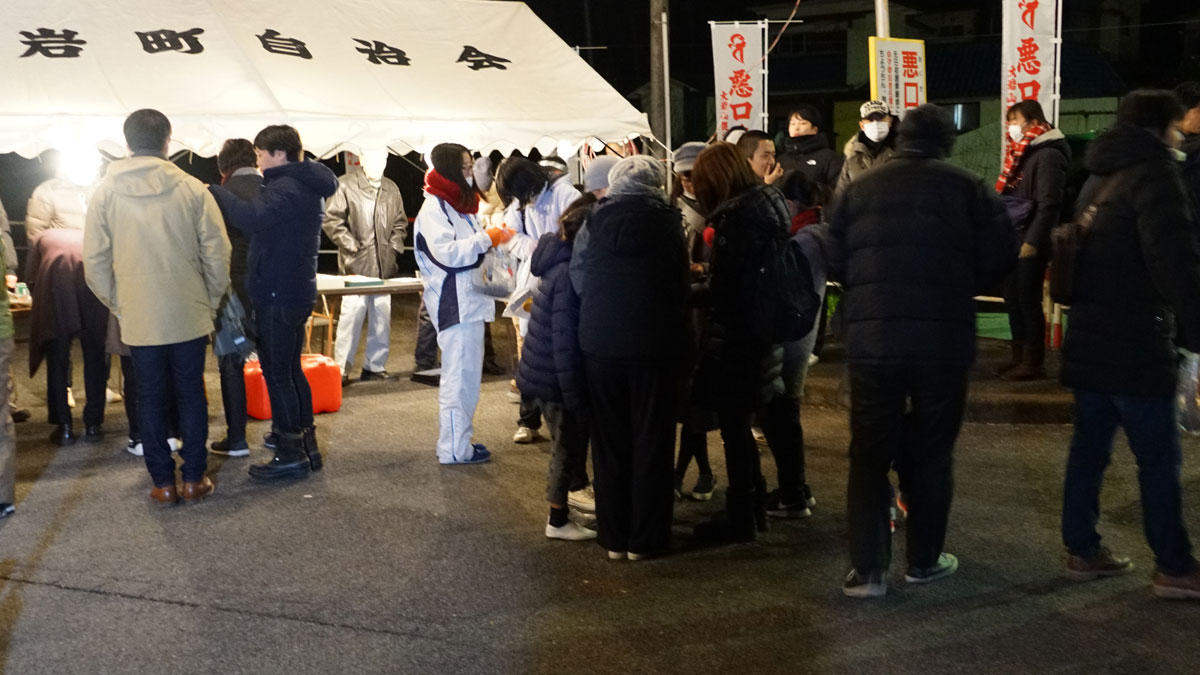
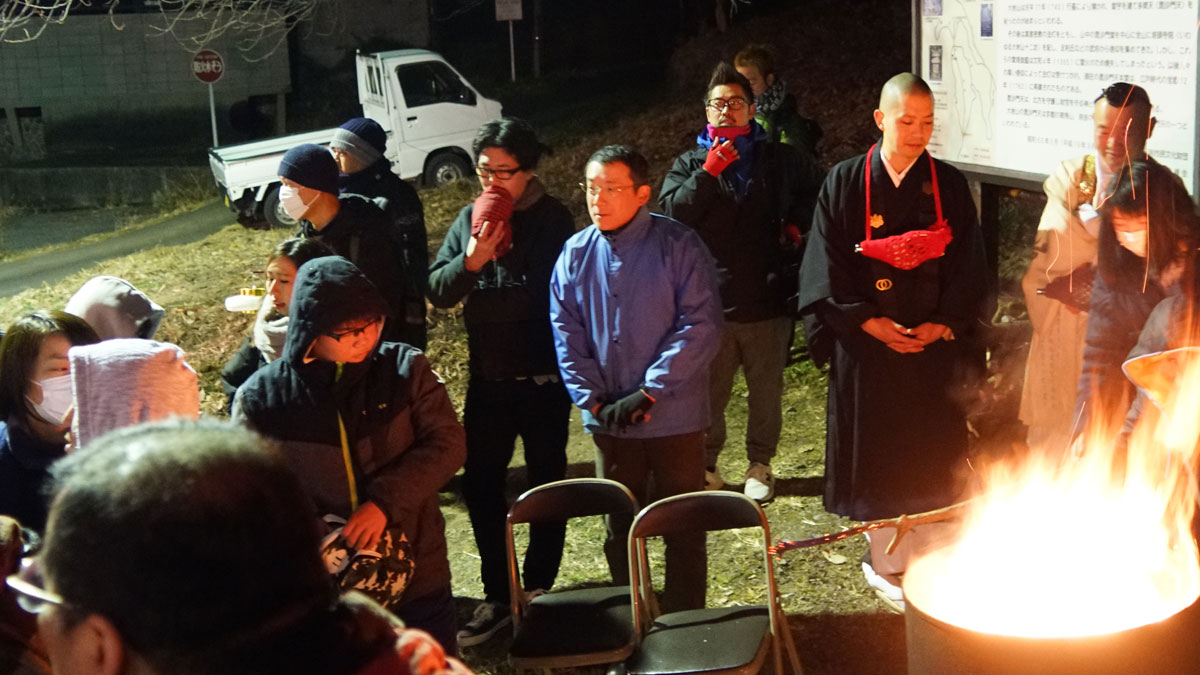
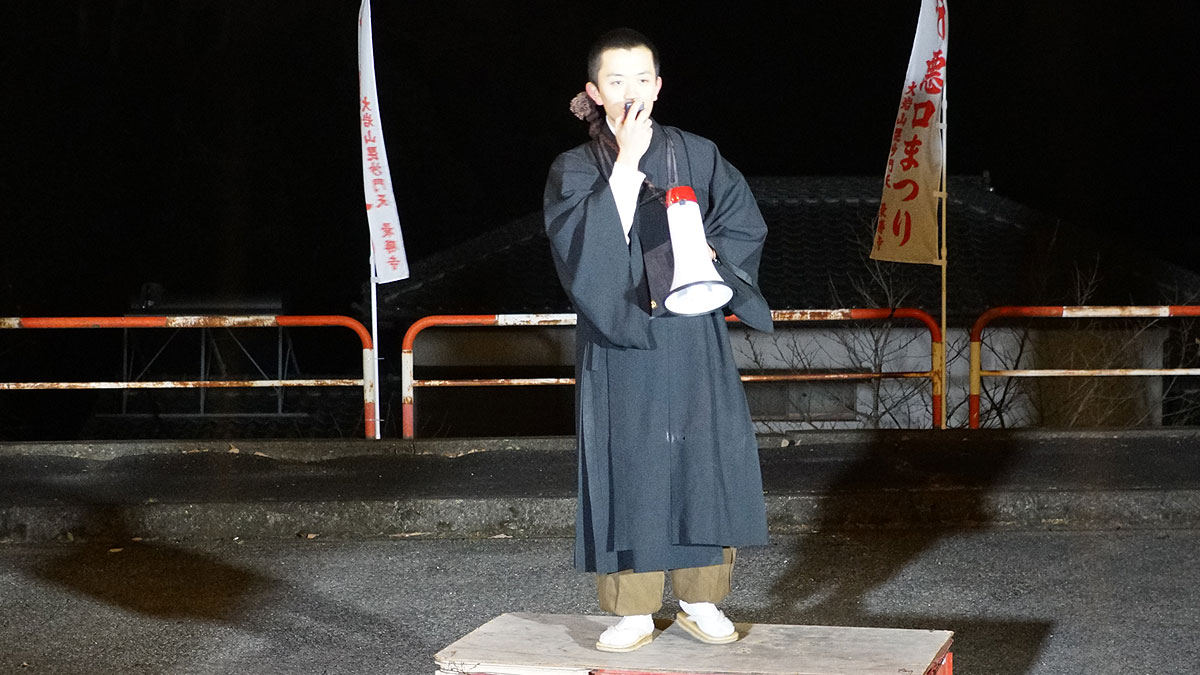
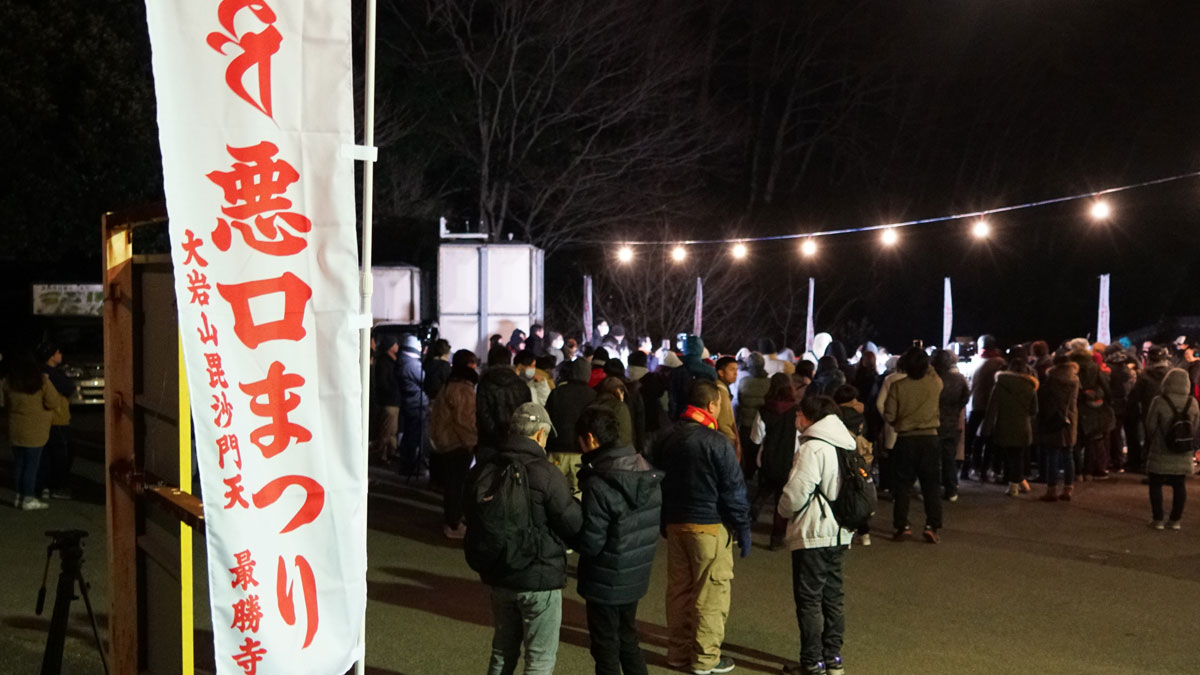
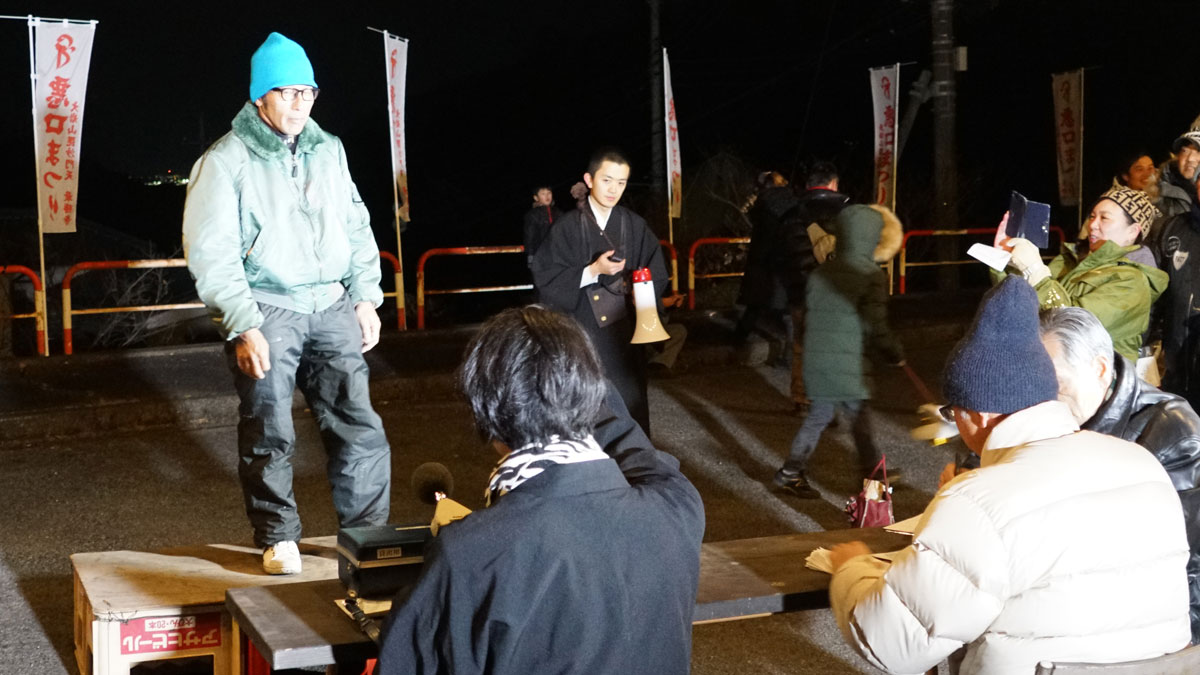
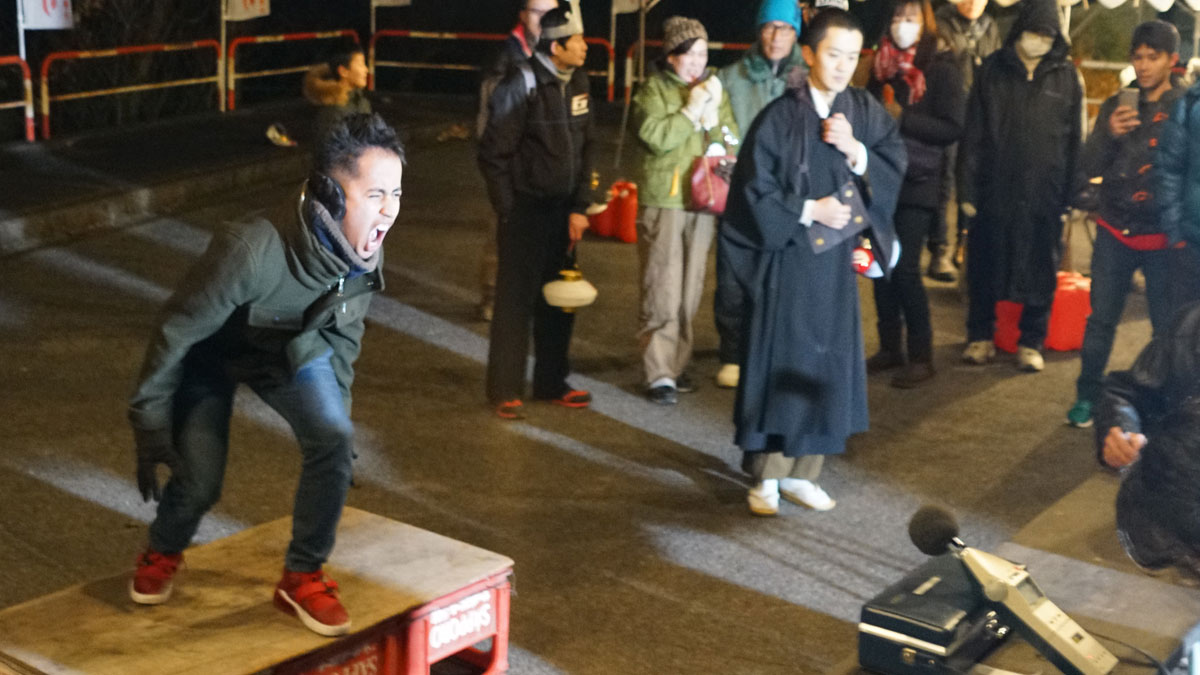
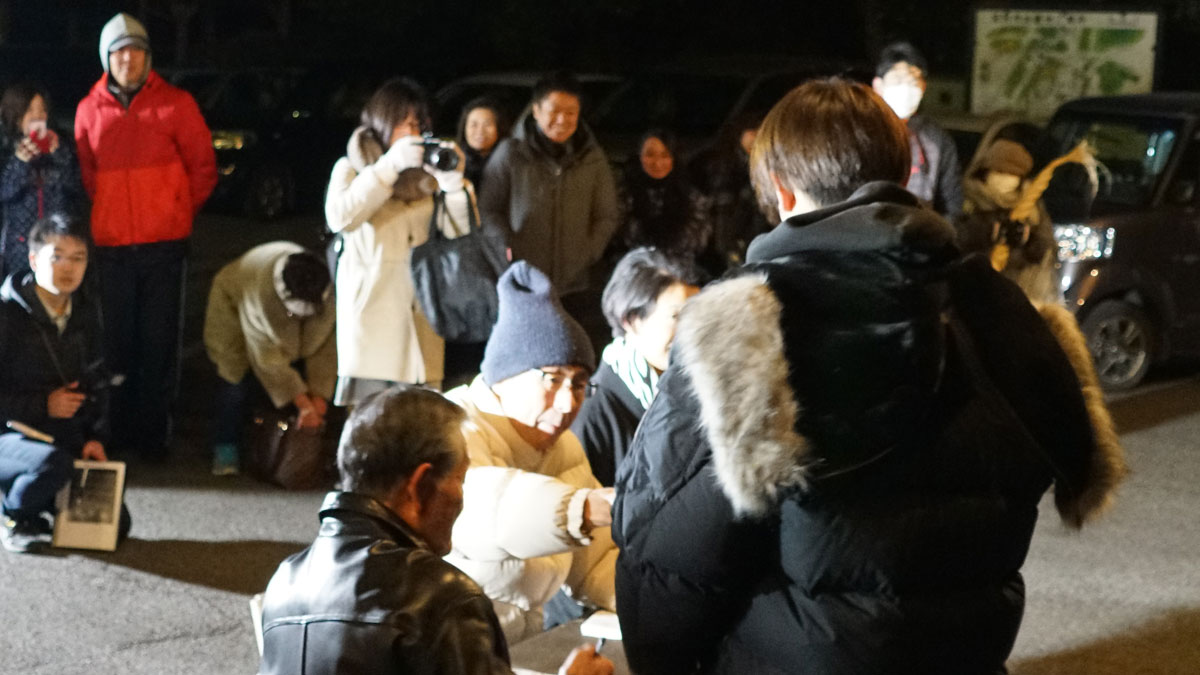
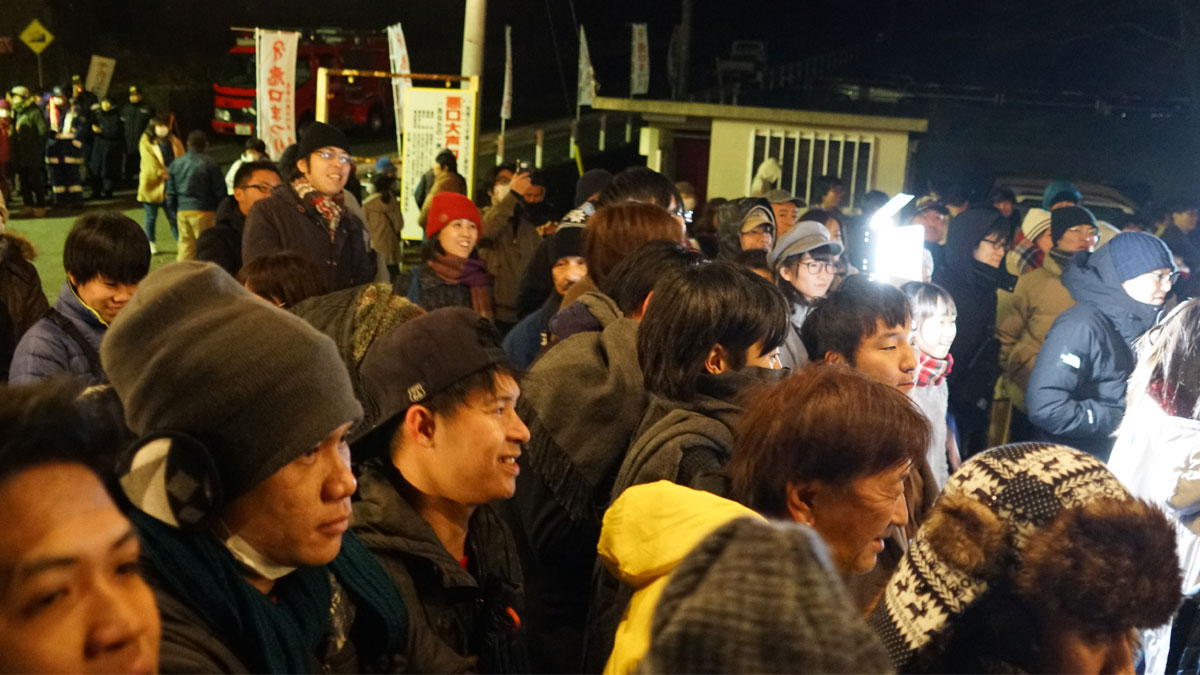
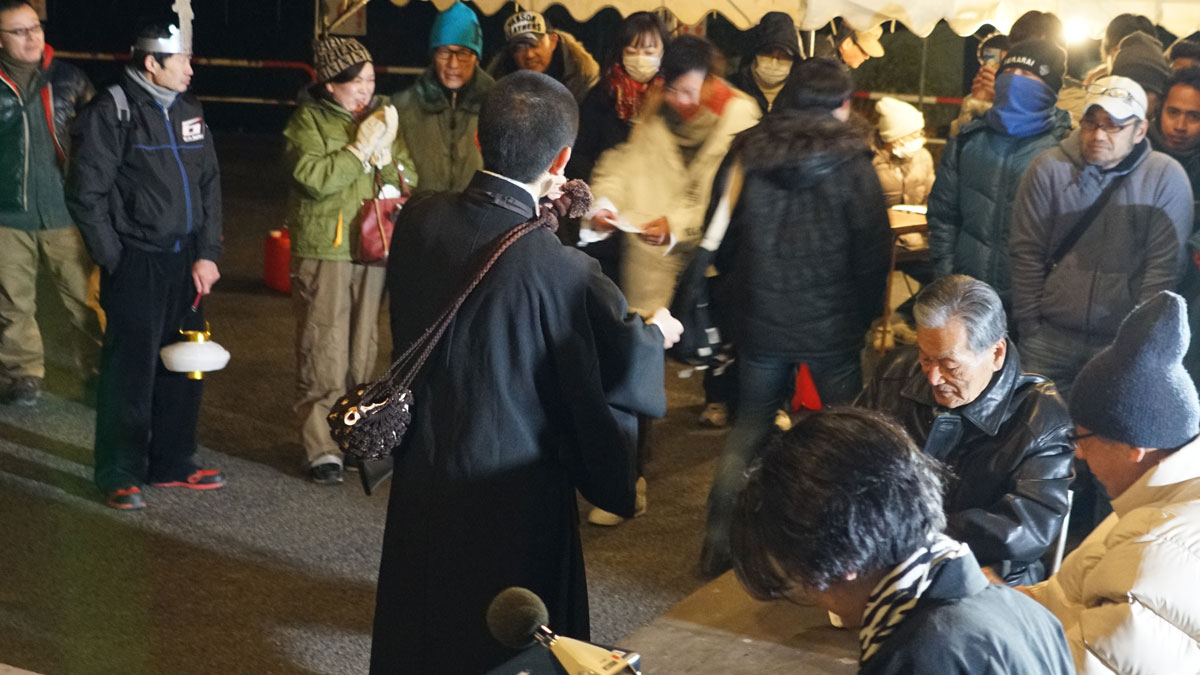
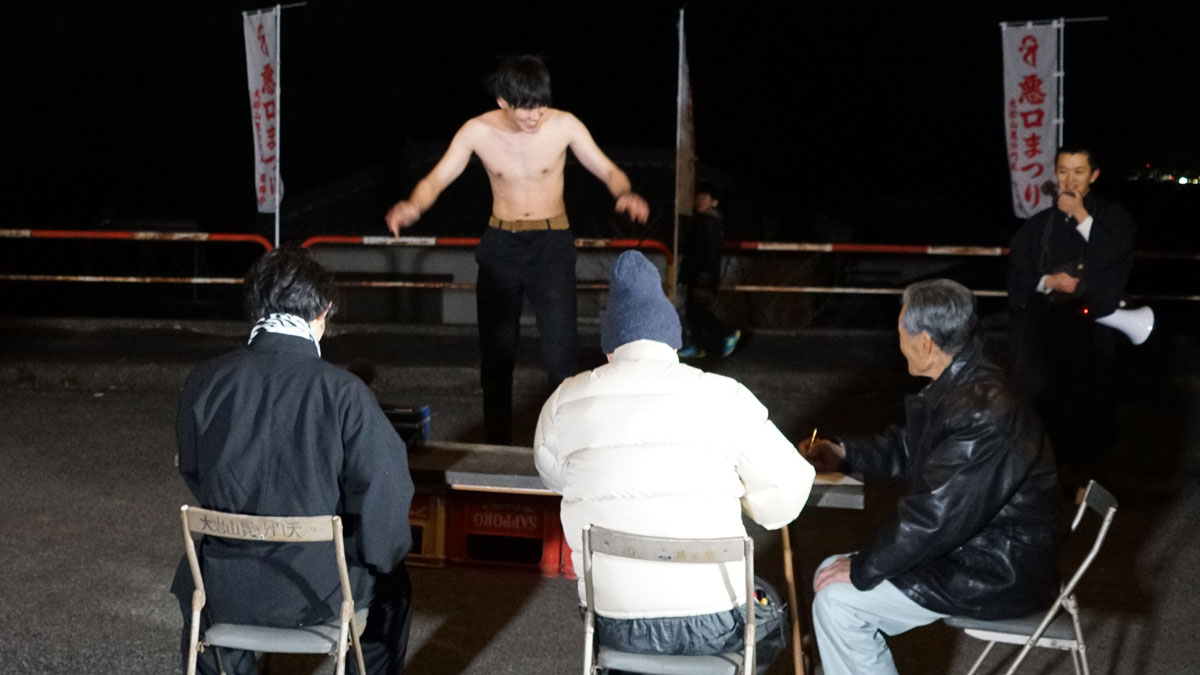
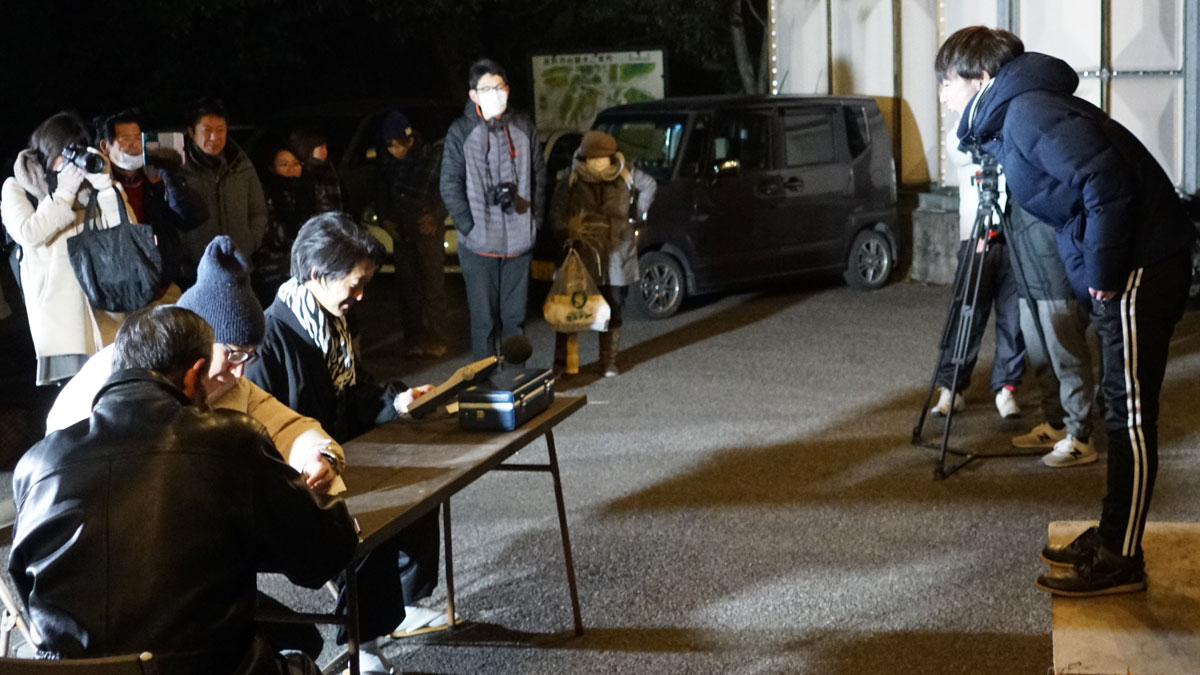
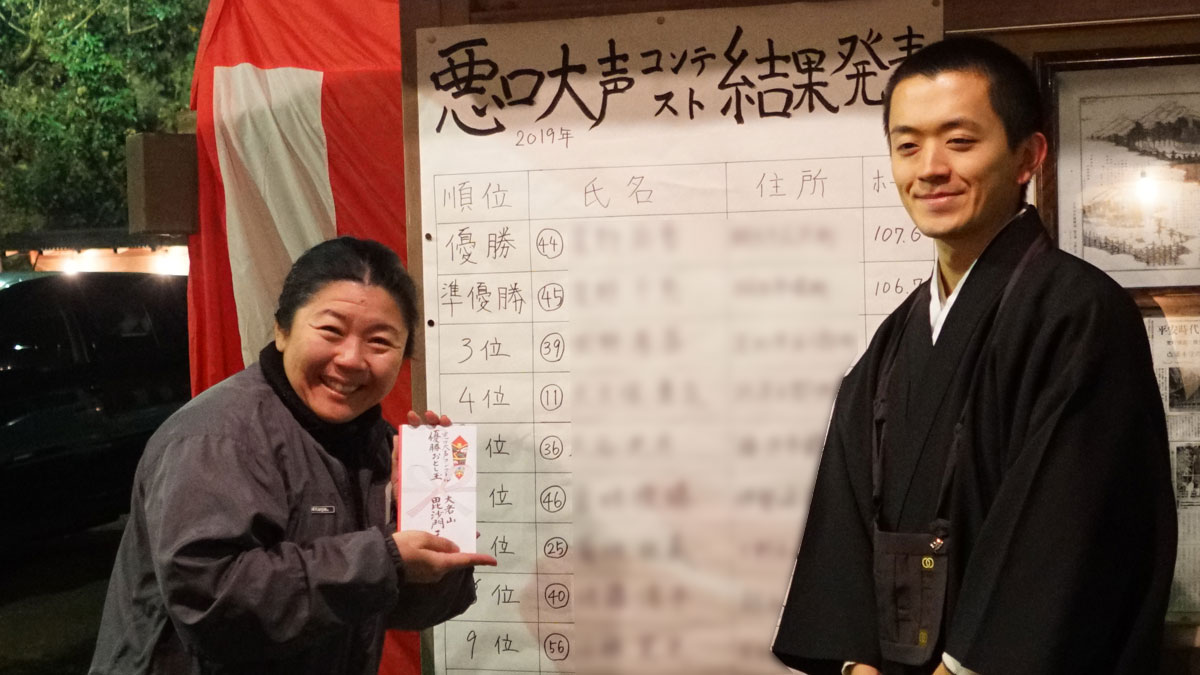
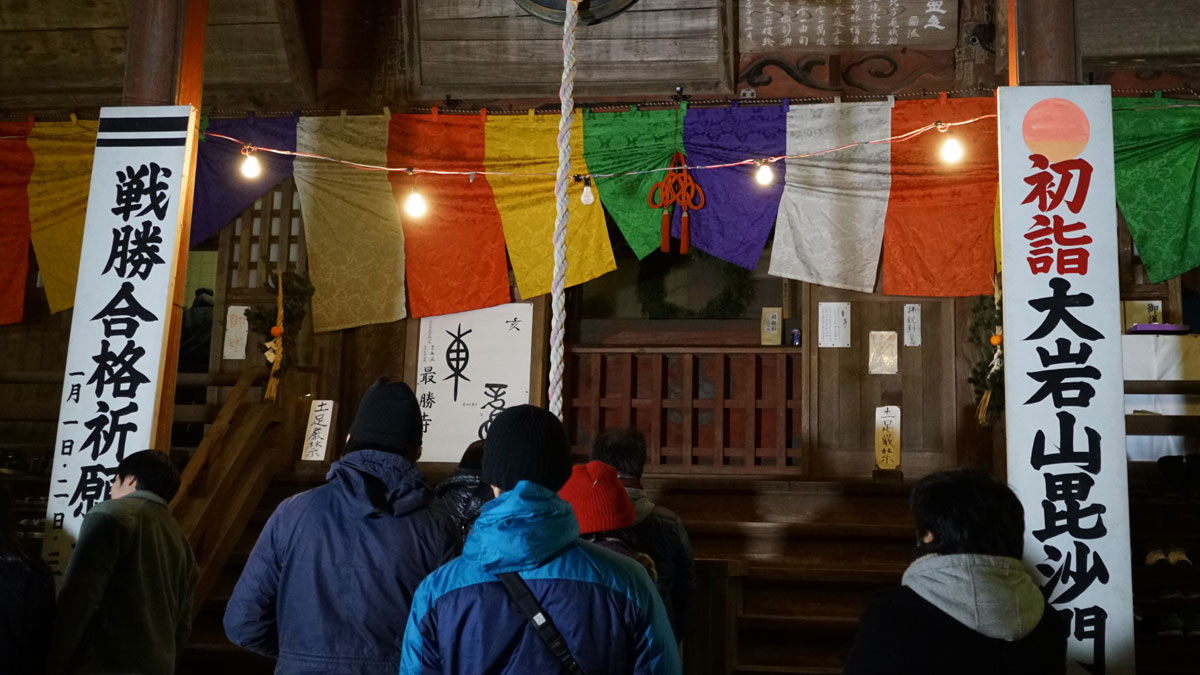
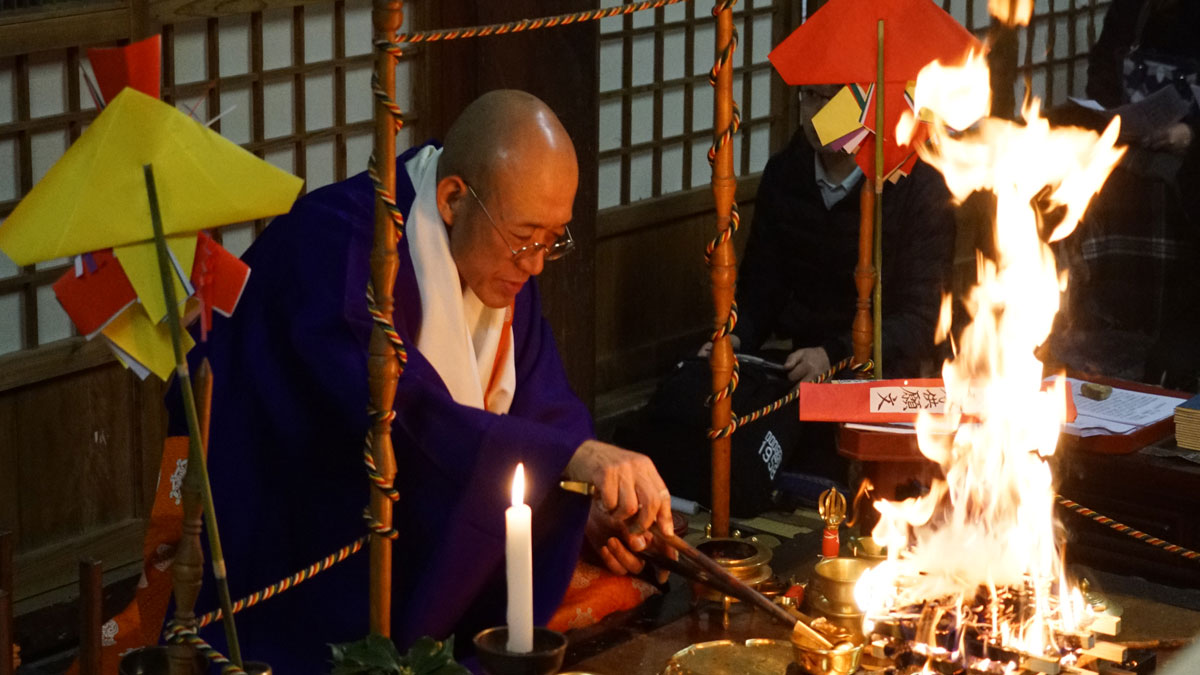
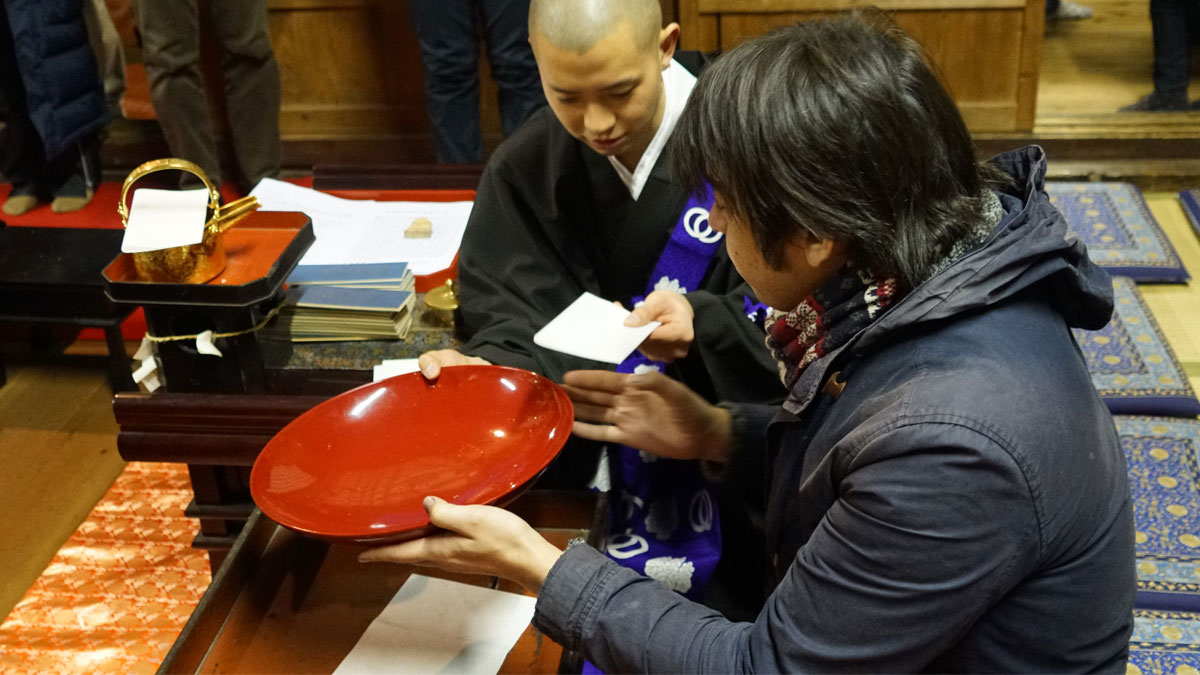
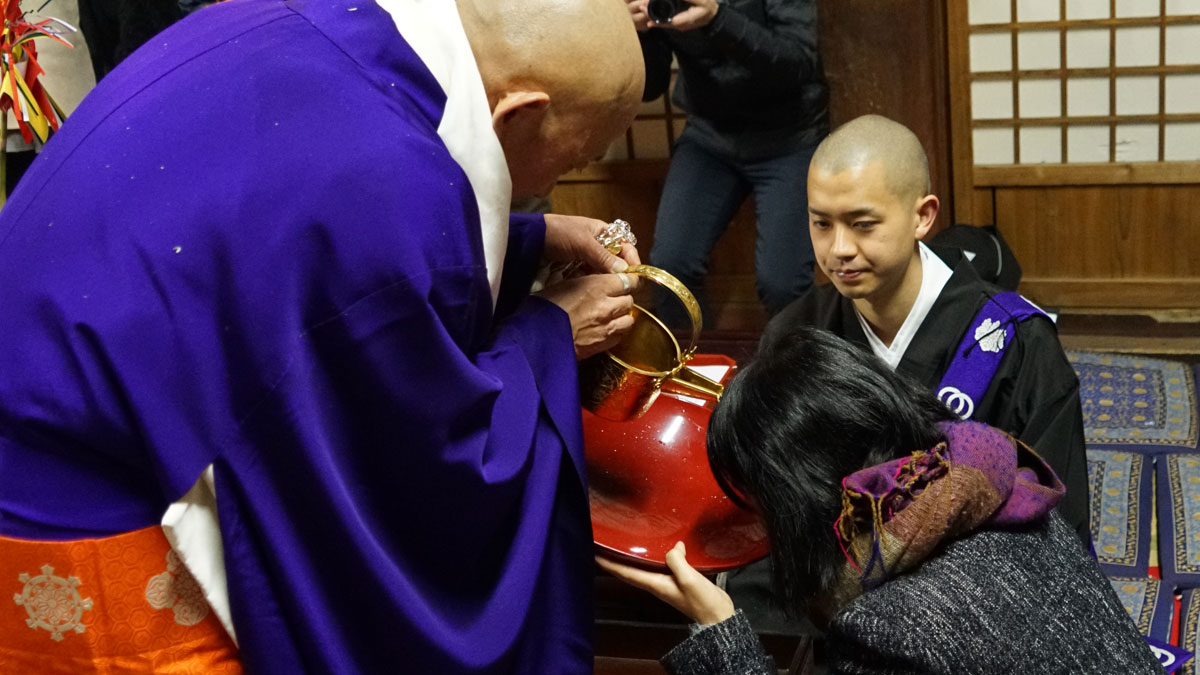
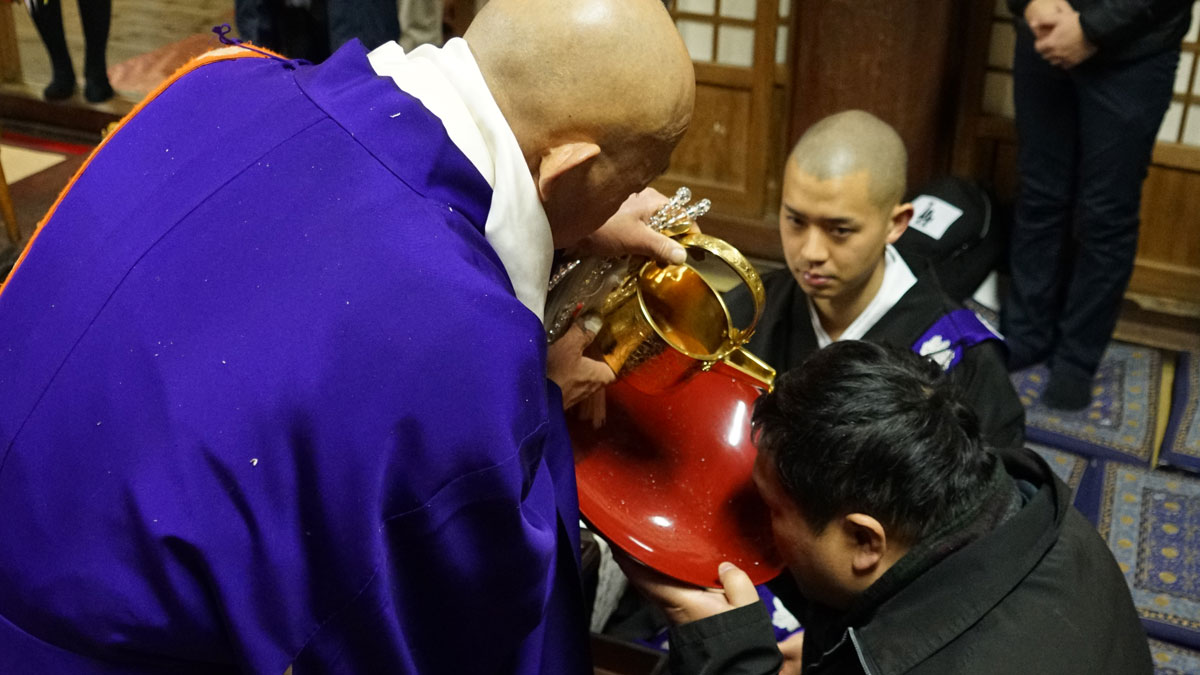
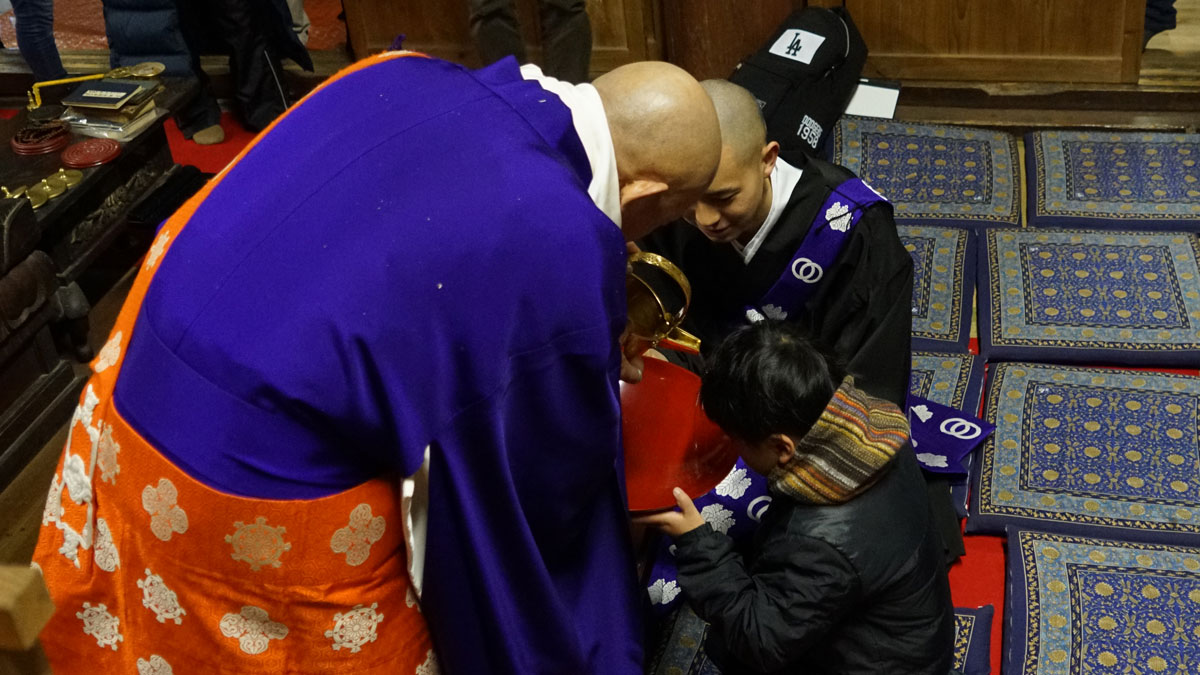
At Oiwa Tamonin Saishoji Temple, a festival of evil speaking (Akutai Matsuri) is held on the night of New Year's Eve. In Japan, similar festivals are held at Gion Shrine in Kyoto, Atago Shrine in Iwama Village, Ibaraki County, Hinokizawadake Shrine in Bando Village, Kita-gamakura-gun, Ueno, and Zuikozan Kiyomizu-dera Temple in Izumo Dakei, among others.